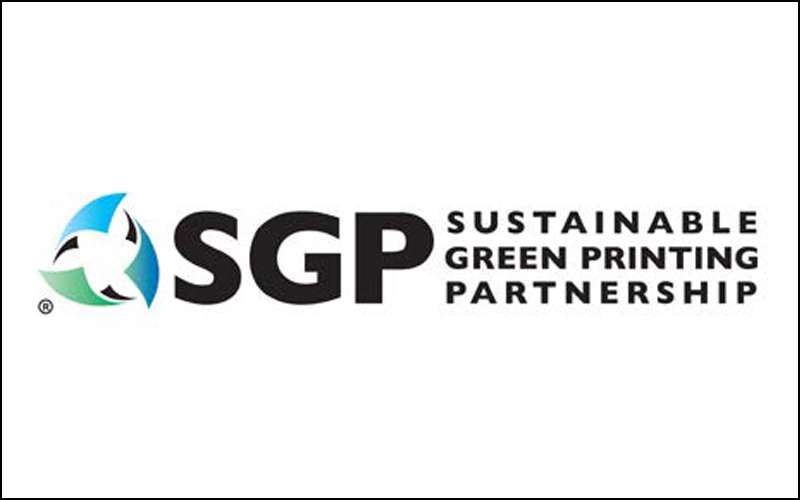
The Sustainable Green Printing Partnership (SGP), Sayville, New York, is a nonprofit organization that certifies printing facilities’ sustainability best practices, including and beyond regulatory compliance. SGP advocates best practices and innovation among print community stakeholders, aligning the printing industry and its customers in the pursuit of a more accountable sustainable supply chain.
In an interview with the SGP lead auditor published in the organization’s October 2020 Monthly Newsletter, Wendy Nadan shared the ins and outs of the virtual audit and how the SGP Impact Tracker really makes a difference for certified facilities.
Q: Wendy, how long have you been an auditor? In that time, how long have you been an auditor for SGP?
A: I obtained my ISO Lead Auditor designation about 15 years ago and joined SGP as an auditor after the beta sites had been certified in 2008. So I have been with SGP for a long time and have grown up with the certification as it has evolved.
Q: How many facilities do you typically visit a year?
A: Well there are no facility visits at the moment due to the virus that has devastated the business environment and claimed too many lives. In ordinary times I would audit somewhere around half a dozen facilities a year. We would have several other auditors make visits as well. That has slowed down in 2020 as many facilities have struggled to keep their doors open (some SGP facilities did shut down for a while), which had the knock-on effect of delaying sustainability activities.
Q: With moving to a virtual audit, how has this adjusted your work? How have facilities been able to adapt?
A: The virtual audit has made scheduling easier as there are no auditor/facility schedules to coordinate and travel to arrange. However, as I already mentioned, many facilities are working with reduced personnel, staff working from home or re-assigned to different roles which has delayed completion of sustainability activities and hence the audit. Facilities are doing tremendously well at adapting and have embraced the new audit style.
Q: Virtually or in-person, what is typically the most challenging item facilities have on their checklists? How do you help them through this?
A: Currently the greatest difficulty is populating the annual reports on the SGP Impact Tracker, which must be completed before an audit can be scheduled. I am working one-on-one with many facilities to identify the easy uploads and then knock off the remaining items one at a time. The list of documents for the annual report seems daunting at first but they are not all equal. Some can be carried over from the previous year with a quick review whilst others have more meat to them.
Q: What are the key signs that you are meeting with a facility that is prepared for its audit? Any signs if they are not?
A: The SGP Impact Tracker has really eliminated this problem. The annual reports must be complete on the Tracker before a recertification audit can be scheduled and the new certification report must be complete for new facilities. So the Tracker can be used as a kind of to-do list for facilities to see what is outstanding in any given year.
Q: We require our facilities to use the SGP Impact Tracker. How does this really make a difference?
A: The Tracker is a central repository for documents. It is surprisingly common that the individual coordinating the sustainability system moves on and leaves someone else to pick up the reins. In the past, this has left some facilities digging out of a hole as they couldn’t locate documentation and hence had nothing to work with. That problem no longer exists so it is far easier to transition in new personnel.
Also, the Tracker now has a comprehensive set of templates that facilities can use if they don’t have a report format already developed. So, for example, there is a template for each kind of required report. Some can be used as is (e.g. the sustainability management system [SMS] audit template), whereas otheres need to be customized (e.g. regulatory compliance audit templates). So, for those facilities that need some help understanding what level of effort is expected, the templates are a great place to start.
Q: From an auditor’s perspective, what value does the SGP Impact Tracker bring to a facility?
A: The Tracker makes the core SMS documents available to the auditor for review before they come on-site. It is much easier to see if there are deficiencies ahead of the audit and get those addressed so the on-site time can be used more effectively. Prior to the Tracker, facilities would send in a hard copy form with check boxes that stated they had completed required activities. Now however, the auditor can actually see those documents and assess them ahead of time.
Q: What is the most beneficial part of the SGP Impact Tracker now that audits are virtual?
A: Obviously, it makes documents more accessible. The Tracker is currently under review to see if it can be expanded to allow for further document uploads that are required for a virtual audit. Currently these documents are exchanged ad-hoc with the auditor but adding a page where they can be organized on the Tracker will make it a lot easier to organize the audit.
Q: Lastly, how can a facility best prepare for the virtual audit by using the SGP Impact Tracker?
A: Make sure documents uploaded to the Tracker are complete. For the training items, include a description of how and when your training plan was rolled out, with sample sign-in sheets or records.
For more information, visit www.sgppartnership.org.

